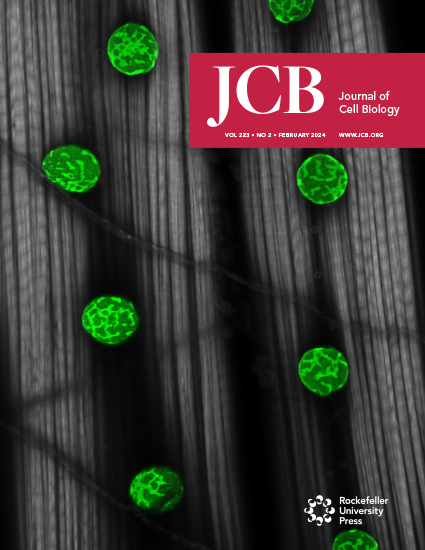PI(3)P coordinates SNX17- and SNX27-dependent protein recycling for long-term synaptic plasticity.
IF 6.4
1区 生物学
Q1 CELL BIOLOGY
引用次数: 0
Abstract
Two major protein recycling pathways have emerged as key regulators of enduring forms of synaptic plasticity, such as long-term potentiation (LTP), yet how these pathways are recruited during plasticity is unknown. Phosphatidylinositol-3-phosphate (PI(3)P) is a key regulator of endosomal trafficking and alterations in this lipid have been linked to neurodegeneration. Here, using primary hippocampal neurons, we demonstrate dynamic PI(3)P synthesis during chemical induction of LTP (cLTP), which drives coordinate recruitment of the SNX17-Retriever and SNX27-Retromer pathways to endosomes and synaptic sites. Both pathways are necessary for the cLTP-dependent structural enlargement of dendritic spines and act in parallel by recycling distinct sets of cell surface proteins at synapses. Importantly, preventing PI(3)P synthesis blocks synaptic recruitment of SNX17 and SNX27, decreases cargo recycling, and blocks LTP in cultured neurons and hippocampal slices. These findings provide mechanistic insights into the regulation of endocytic recycling at synapses and define a role for dynamic PI(3)P synthesis in synaptic plasticity.PI(3)P协调SNX17-和snx27依赖蛋白的长期突触可塑性循环。
两种主要的蛋白质循环途径已经成为突触可塑性持久形式的关键调节因子,如长期增强(LTP),但这些途径在可塑性期间是如何被招募的尚不清楚。磷脂酰肌醇-3-磷酸(PI(3)P)是内体运输的关键调节剂,这种脂质的改变与神经变性有关。在这里,我们利用初级海马神经元,证明了在LTP (cLTP)的化学诱导过程中PI(3)P的动态合成,它驱动SNX17-Retriever和SNX27-Retromer通路协调募集到核内体和突触位点。这两种途径对于树突棘的cltp依赖性结构扩大都是必要的,并且通过在突触中循环不同的细胞表面蛋白质而并行起作用。重要的是,阻止PI(3)P合成阻断了SNX17和SNX27的突触募集,减少了货物再循环,并阻断了培养神经元和海马切片中的LTP。这些发现为突触内吞循环的调控提供了机制见解,并定义了动态PI(3)P合成在突触可塑性中的作用。
本文章由计算机程序翻译,如有差异,请以英文原文为准。
求助全文
约1分钟内获得全文
求助全文
来源期刊

Journal of Cell Biology
生物-细胞生物学
CiteScore
12.60
自引率
2.60%
发文量
213
审稿时长
1 months
期刊介绍:
The Journal of Cell Biology (JCB) is a comprehensive journal dedicated to publishing original discoveries across all realms of cell biology. We invite papers presenting novel cellular or molecular advancements in various domains of basic cell biology, along with applied cell biology research in diverse systems such as immunology, neurobiology, metabolism, virology, developmental biology, and plant biology. We enthusiastically welcome submissions showcasing significant findings of interest to cell biologists, irrespective of the experimental approach.
 求助内容:
求助内容: 应助结果提醒方式:
应助结果提醒方式:


